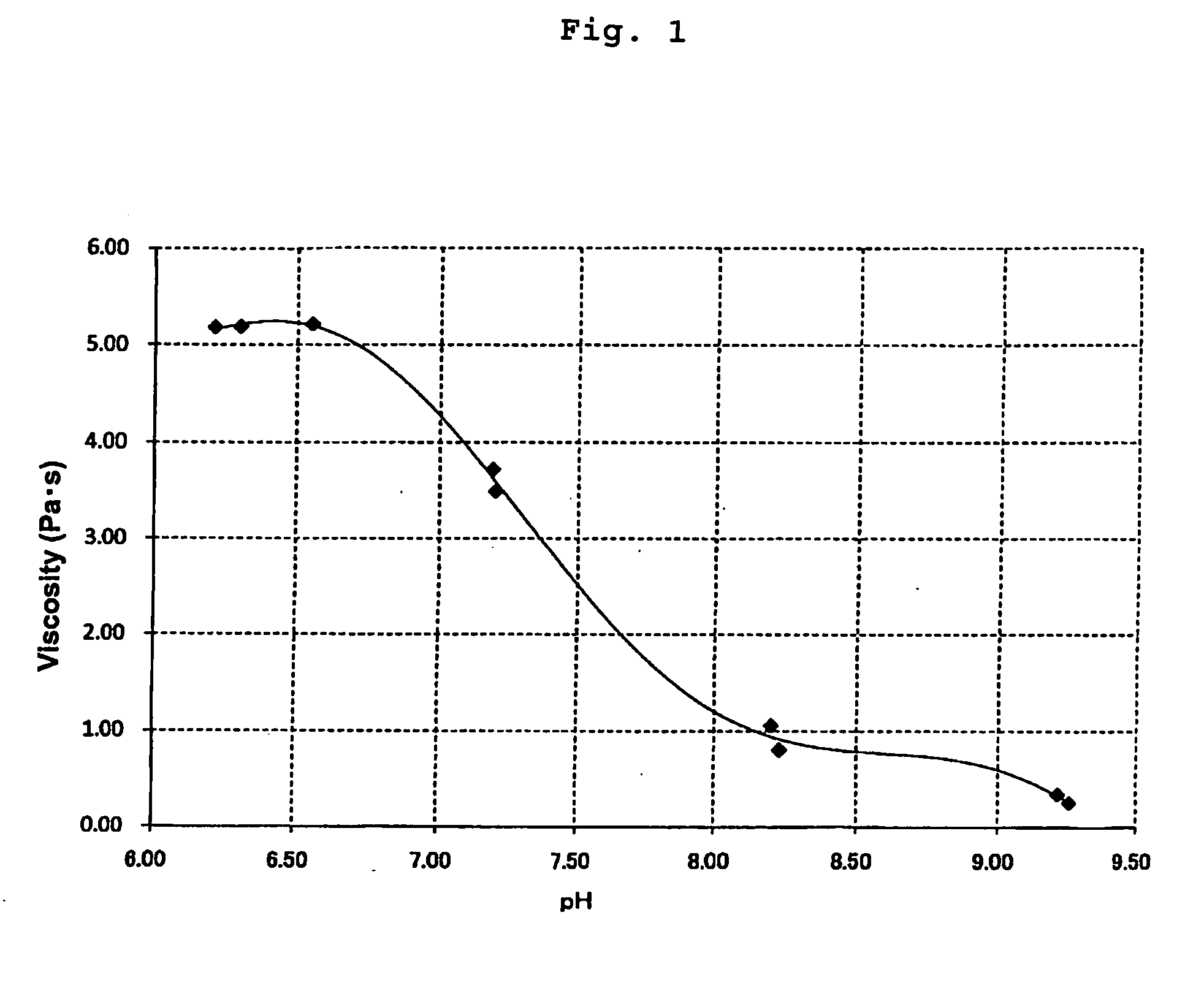Method of manufacturing positive electrode for non-aqueous electrolyte battery, slurry used therefor, and non-aqueous electrolyte battery
a technology of non-aqueous electrolyte batteries and positive electrodes, which is applied in the direction of non-metal conductors, cell components, conductors, etc., can solve the problems of increasing the product cost of slurry, increasing environmental impact, and low durability of active materials of lithium-ion secondary batteries. , to achieve the effect of excellent dispersion stability, coatability and adhesion strength, and excellent dispersion stability
- Summary
- Abstract
- Description
- Claims
- Application Information
AI Technical Summary
Benefits of technology
Problems solved by technology
Method used
Image
Examples
example 1
[0049]First, CMC (made by Dai-ichi Kogyo Seiyaku Corp. under the trade name “BSH-12”, degree of etherification: 0.65 to 0.75) was provided. Using a mixer (made by Primix Corp. under the trade name “Homomixer”), the CMC was dissolved in deionized water with a pH of 5.40, to obtain a 0.8 weight % CMC aqueous solution. It should be noted that since the deionized water shows a pH of 5.40 due to the dissolution of carbonic acid gas and the CMC aqueous solution shows mild acidity from the beginning, the mild alkalinity of the slurry in which an olivine-type lithium iron phosphate has been added as the positive electrode active material will be somewhat alleviated.
[0050]Next, succinic anhydride was added as a pH adjuster to the resultant CMC aqueous solution. The succinic anhydride was added in amount of 0.1 parts by weight with respect to 100 parts by weight of the positive electrode mixture.
[0051]Next, 969 g of an olivine-type lithium iron phosphate (LiFePO4, average particle size: 0.5 μ...
example 2
[0061]Preparation of a Positive Electrode, Measurements of the pH and the viscosity, and a coating test were carried out in the same manner as described in Example 1 above, except that the amount of succinic anhydride added was set at 0.5 weight %. The results are shown in Table 1 below and FIG. 1.
example 3
[0062]Preparation of a Positive Electrode, Measurements of the pH and the viscosity, and a coating test (but only with a gap of 200 μm) were carried out in the same manner as described in Example 1 above, except that the amount of succinic anhydride added was set at 1.0 weight %. The results are shown in Table 1 below and FIG. 1.
PUM
| Property | Measurement | Unit |
|---|---|---|
| pH | aaaaa | aaaaa |
| particle size | aaaaa | aaaaa |
| temperature | aaaaa | aaaaa |
Abstract
Description
Claims
Application Information
 Login to View More
Login to View More - R&D
- Intellectual Property
- Life Sciences
- Materials
- Tech Scout
- Unparalleled Data Quality
- Higher Quality Content
- 60% Fewer Hallucinations
Browse by: Latest US Patents, China's latest patents, Technical Efficacy Thesaurus, Application Domain, Technology Topic, Popular Technical Reports.
© 2025 PatSnap. All rights reserved.Legal|Privacy policy|Modern Slavery Act Transparency Statement|Sitemap|About US| Contact US: help@patsnap.com

